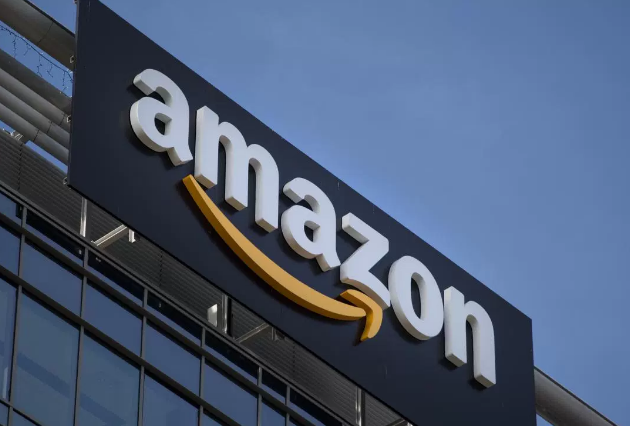 Amazon is the ultimate model in consumerism. They’re killing it. They own their own planes because it made more sense for them to buy and maintain than to pay for shipping to the Northwest.
Amazon is the ultimate model in consumerism. They’re killing it. They own their own planes because it made more sense for them to buy and maintain than to pay for shipping to the Northwest.
It’s easy to see why. From recommendations to one-click purchases, they’ve figured out how to communicate just enough information to convince you to buy. They’ve got most of us down to a science. They know how to re-market, when to re-market and make recommendations that force us to say “well, I had to” more often than we’d like.
That’s the best part about Amazon’s psychology. It’s built around making it so easy to say yes, we don’t have time to psychologically catch up and say no. We don’t realize what we’re doing and go through all the rationalizations because we’re on auto-pilot. And they’re smart enough to figure out the purchasing flight path.
It’s been happening at the grocery stores and Target too. They call this omnichannel commerce.Remember the days of standing in long lines at a cashier? Gone. They do this to speed up the buying experience and earn more customers. Think about the last time you went to the Apple store. Buying something at an Apple store is easier because you just have to find an employee, not a line.
After over 15 years of applying to jobs online, I can’t help but wonder why we haven’t figured it out. It’s definitely where the future is.
Omnichannel Recruiting
 It seems pretty simple to me. Omnichannel commerce meets talent acquisition. We’re seeing glimpses of this style from the next generation applicant tracking systems (ATS) like SmartRecruiters, Lever, and Greenhouse as they develop and launch their own marketing CRMs. OTA starts during the attraction phase. Instead of making candidates stand in a metaphorical line, waiting to apply in an arduous process on my careers site – we’re hosting custom career experiences based on the source of the click.
It seems pretty simple to me. Omnichannel commerce meets talent acquisition. We’re seeing glimpses of this style from the next generation applicant tracking systems (ATS) like SmartRecruiters, Lever, and Greenhouse as they develop and launch their own marketing CRMs. OTA starts during the attraction phase. Instead of making candidates stand in a metaphorical line, waiting to apply in an arduous process on my careers site – we’re hosting custom career experiences based on the source of the click.
Recruiting starts to mimic consumer level experiences for applying on channels like Glassdoor, Facebook, mobile applications, in-store experiences, employee engagements, employee referrals, product or service experiences, Linkedin, and any other method a company can use to interact with a candidate. We start to let them apply there instead of handing them a pamphlet and expecting them to remember when they get home.
It’s Bigger: The C-Suite Sales Point
 Just like Amazon presents every type of product on their site, your ATS goes SaaS (Software as a Service) and connects your paid job boards, pre-screening tests, technical questionnaires, employment applications, offer letters, background checks and on-boarding documentation on one platform. It means that with Omnichannel Talent Acquisition, we’re looking at a bigger picture. That improves every part of the process.
Just like Amazon presents every type of product on their site, your ATS goes SaaS (Software as a Service) and connects your paid job boards, pre-screening tests, technical questionnaires, employment applications, offer letters, background checks and on-boarding documentation on one platform. It means that with Omnichannel Talent Acquisition, we’re looking at a bigger picture. That improves every part of the process.
It also means data to effectively track that process each step of the way. All of which becomes really useful the next time you’re getting questions to justify your recruiting business case to the C-suite. It’s a lot easier to ask for resources (like money) when you’re capturing all of the key recruiting analytics.
Today, if you ask your CEO how many deals are in the company’s sales pipeline, they’ll give you a nearly correct answer. Ask how many candidates are about to get an offer and nine times out of ten, they won’t know.
The same thing happens when the VP of sales tells you you’re going to hire 60 people this year. You want to say no, but you can’t. You can’t prove why that’s realistic, all you can do is say it’s unrealistic. OTA means knowing your levers for hiring and the conversations change.
New C-Suite Strategy Conversation
With an omnichannel talent model, the next time your VP of Sales asks how many people you can hire in the next three quarters, you can cite marketing costs, effort metrics and the impact on your team. You can use that as leverage with your CFO to get the allocations you need to make a realistic hiring plan.
This conversation is setting the company and the recruiting team up to win. The team sees hiring as a business function and the recruiters as a business line owner. It’s the definition of what happens when Amazon meets recruiting.
 About The Author: Lorne Epstein is the author of You’re Hired! Interview Skills to Get the Job and has led Global Talent Acquisition teams in the United States and globally. He can be reached at [email protected].
About The Author: Lorne Epstein is the author of You’re Hired! Interview Skills to Get the Job and has led Global Talent Acquisition teams in the United States and globally. He can be reached at [email protected].
Recruit Smarter
Weekly news and industry insights delivered straight to your inbox.





